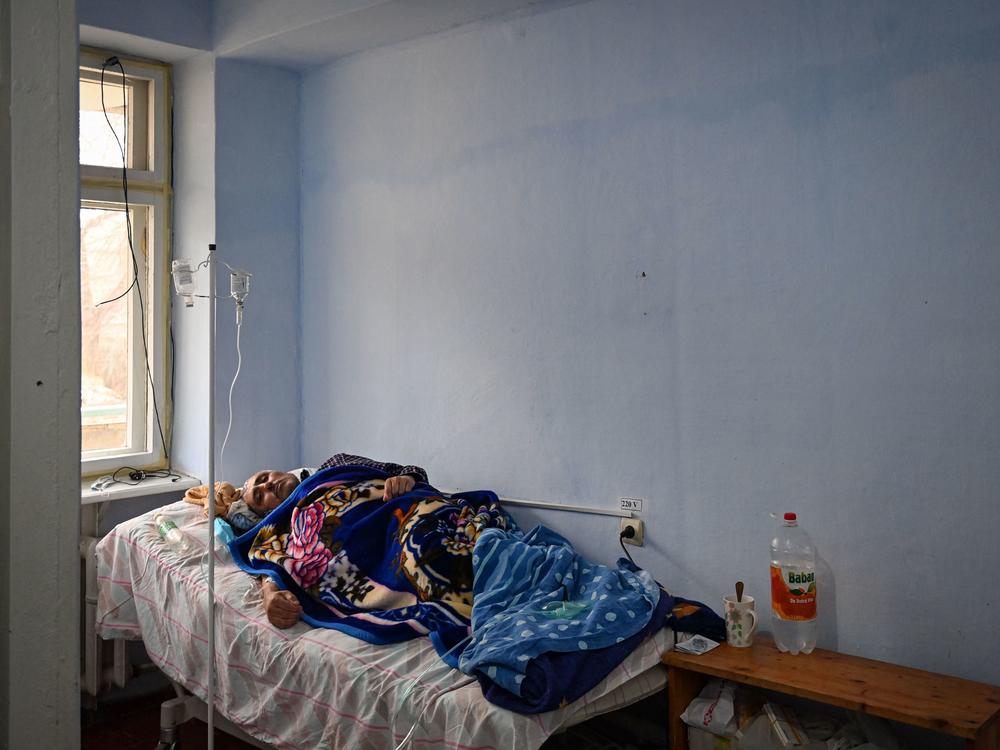Section Branding
Header Content
What Is This COVAX Program That The U.S. Is Pouring Millions Of Vaccines Into?
Primary Content
This week, President Biden announced that the U.S. will be sending millions of doses of COVID vaccines abroad by the beginning of July. But he said the U.S. would not be doling out these life-saving vaccines simply to curry favor with allies ravaged by the pandemic.
"We'll share these vaccines in the service of ending the pandemic everywhere, and we will not use our vaccines to secure favors from other countries," Biden said. And significantly, he said the U.S. will work with COVAX "to ensure that the vaccines are delivered in a way that is equitable and that follows the science and the public health data."
Exact details of the arrangement are still being hammered out. But the U.S. commitment to COVAX is being seen by many global health leaders as a potential turning point in making the distribution of vaccines less dependent on a nation's wealth or political allegiance.
Of the just over 1.5 billion doses of vaccine administered so far, nearly 60% have been administered in 20 predominantly wealthy nations, according to statistics compiled by Our World in Data.
And this global inequity in access to vaccines is exactly the situation COVAX was trying to avoid.
So, what is COVAX?
It's a joint venture between the World Health Organization, the Center for Epidemic Preparedness and Innovation (CEPI), Gavi, the Vaccine Alliance, and UNICEF, the United Nations' children's fund. It was set up in April of 2020.
The idea behind the program is that COVAX would pre-purchase huge quantities of vaccines from the major manufacturers. Then as they come off the production line, dole them out globally in a way that every country got an equitable share based on the size of their population.
COVAX has a variety of funding sources. It gets money from wealthy member countries making down payments to COVAX for future vaccine shipments. It also gets direct support from private organizations, including the Bill & Melinda Gates Foundation (which is a funder of this blog) as well as large international organizations such as UNICEF and the World Bank.
This bulk purchasing program would allow smaller nations to get vaccines at the same price as larger countries. And 92 of the world's poorest nations are supposed to be getting vaccines for free through COVAX.
Nearly every country in the world, rich and poor alike, has signed up to COVAX. A few nations have decided not to join. Cuba passed, for instance, and is betting on a homegrown vaccine. Tanzania turned down the offer of free vaccines after political leaders there said that prayer had driven the virus out of the country.
Missing the target
The main promise of COVAX was that it would ensure that by the end of this year, at least 20% of everyone in the world was vaccinated. That target was created in the hopes of getting health care workers and the most vulnerable people vaccinated, but it's far less than what would be needed to stop transmission.
But COVAX has been struggling — and officials say it may not meet that modest target.
"You can't distribute vaccines that you don't have," says Peter Singer, the assistant director-general of the WHO, summing up COVAX's main dilemma at the moment.
"COVAX works," Singer insists about the program, which made its first delivery of vaccines in February. "It's an effective mechanism for distributing vaccines. It's distributed 65 million vaccines to more than 100 countries — and about a quarter of them wouldn't have any vaccines at all right now [without COVAX]."
The problem is a lack of supply. Wealthy nations have bought up huge portions of the global vaccine into the foreseeable future. The Serum Institute of India, which was going to be the primary supplier of doses to COVAX, hasn't delivered any shipments to the program since March. It has been diverting all its production to address the unfolding COVID crisis inside India and may not resume exports until the end of the year.
"We've had a gap of over 150 million doses already up to May," says Bruce Aylward, a senior advisor to the director-general of the WHO. "And that could get greater still going into June."
Thinking beyond COVAX
Many countries are not waiting around for COVAX, says Richard Marlink, the director of Rutgers Global Health Institute who worked on rolling out anti-AIDS drugs during the HIV pandemic in Africa.
COVAX is the only global tool that's trying to make sure every country gets access to some of the limited global supply, he says. But it is reasonable that many countries are seeking additional ways to get vaccines, he adds. Many wealthy nations managed to buy vaccines on their own. Some have gotten subsidized or free vaccines from Russia and China. And some have managed to purchase small batches to at least get health care workers immunized.
"(COVAX) is an important tool. But COVAX shouldn't be the only effort and countries rightfully are not waiting around for COVAX to save the day," he says.
But, he says, "for the very poor countries, [COVAX] is pretty much their only option."
Leaders of COVAX say supply shortfalls at the program are unlikely to be dealt with in the short term by increasing output at pharmaceutical plants. The global vaccine manufacturing infrastructure is maxed out and even running into shortages of critical ingredients.
UNICEF's executive director, Henrietta Fore, in a statement this week said it's now time for countries that have vaccinated a significant portion of their populations to start donating some of their doses to countries that have gotten hardly any.
Copyright 2021 NPR. To see more, visit https://www.npr.org.

